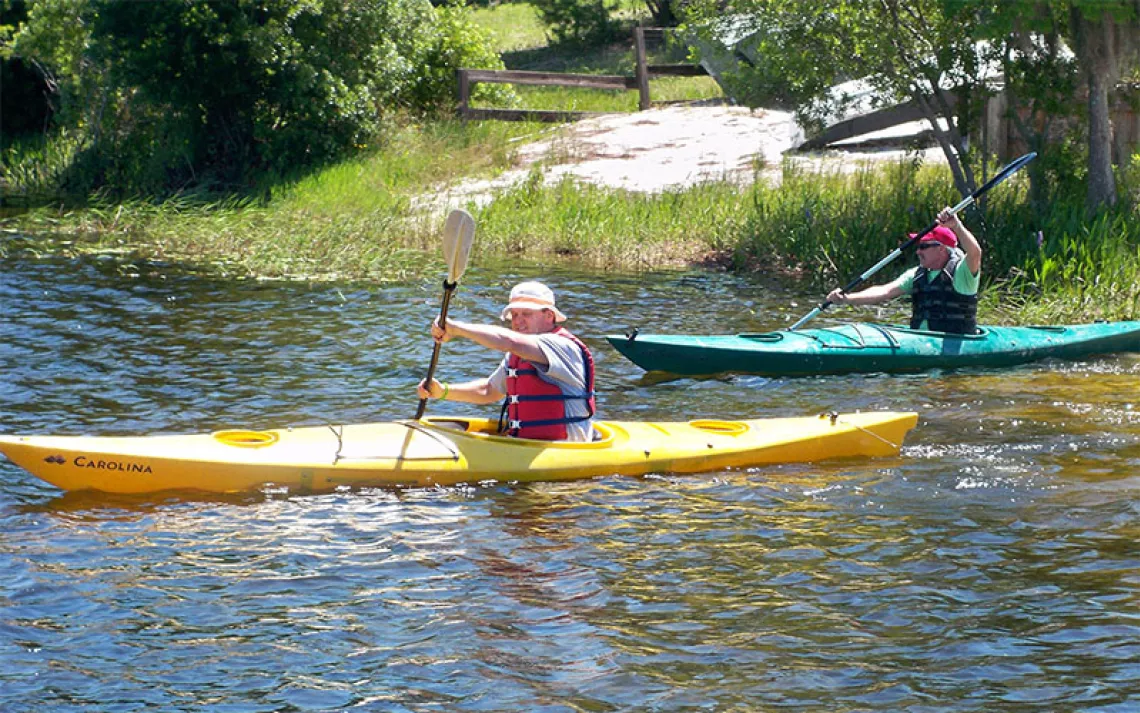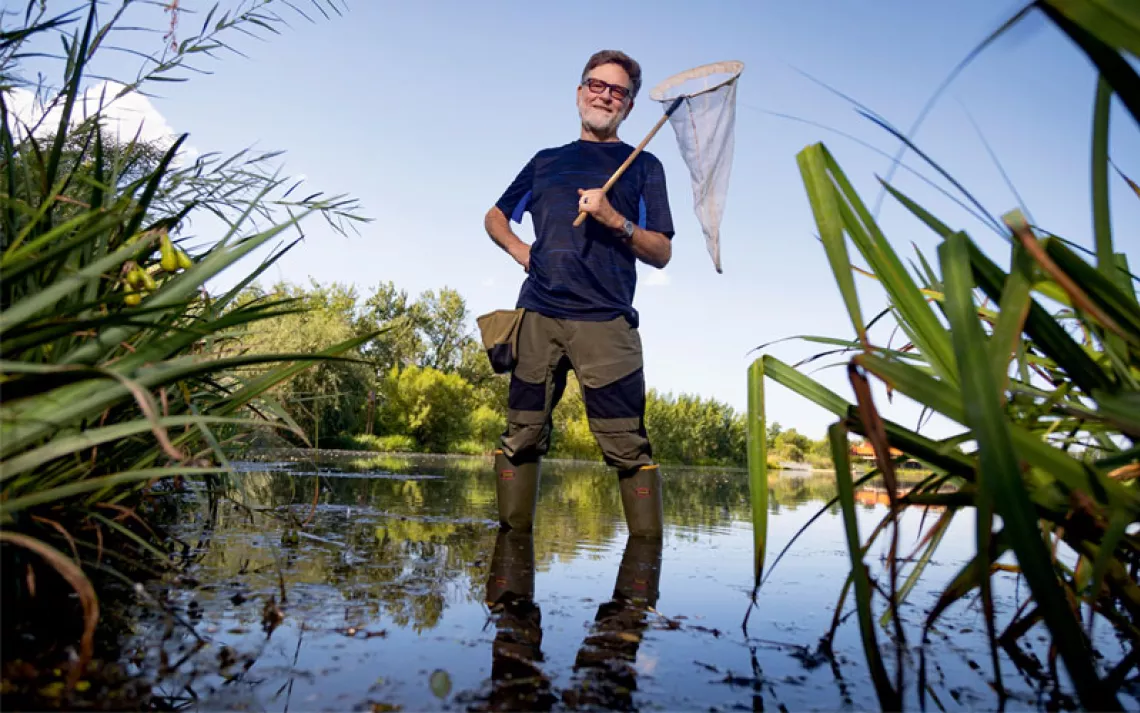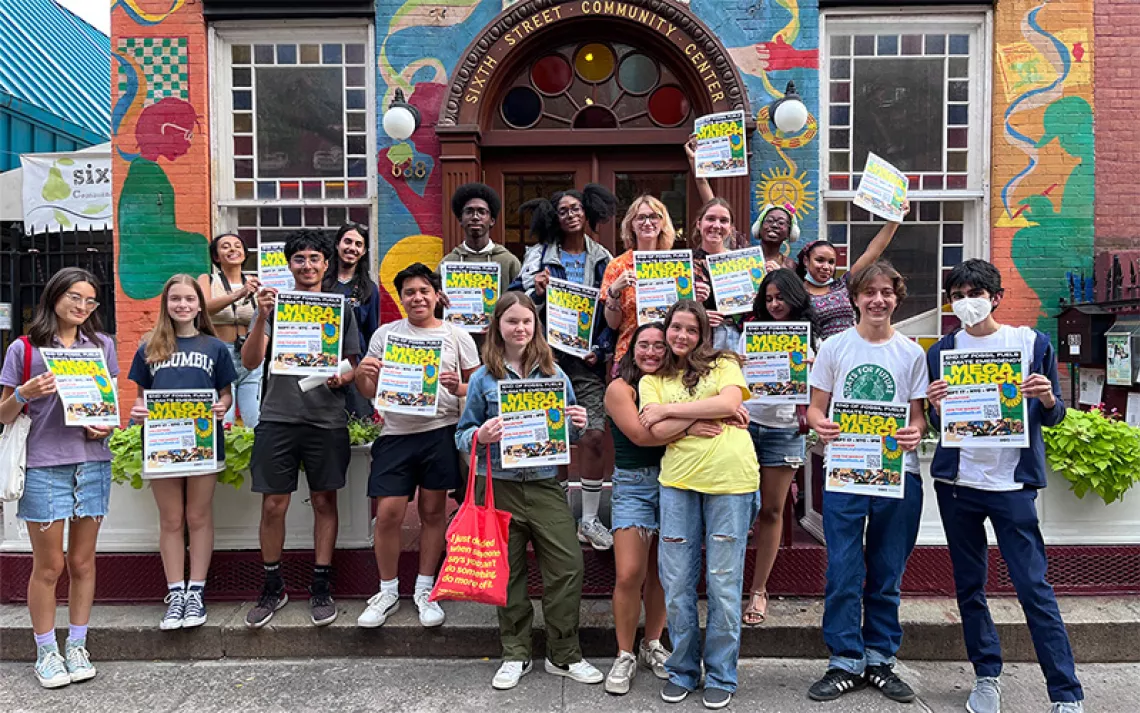Traveling Through Undersea Internet Cables (And Other Adventures)
Scholars use web to make the environmental humanities more accessible

Cable landing, Guam. Photo courtesy of Nicole Starosielski.
When Henry Thoreau wrote in Walden that he “went to the woods in order to live deliberately,” he certainly did not envision how reading Walden deliberately could look like 150 years later: in Digital Thoreau, you can see the changes Thoreau made across the seven existing manuscript versions of the book, and add your own notes, links, and interpretations. A collaborative project between SUNY-Geneseo, The Thoreau Society, and The Walden Woods Project, this fluid-text edition is just one online project linked to the environment that scholars traditionally tied down to paper have developed.
When we think of the type of research humanities scholars and social scientists do, we typically think old school: perhaps flipping through correspondence in a dusty archive, conducting ethnographies in a far-flung locale, or reading books with a pen in hand. Those methods all remain true. However, museums, libraries, and scholars are in the thick of a digital revolution, utilizing all kinds of computerized tools to ask different types of research questions, and new ways of presenting their materials and findings online. Rather than writing an academic article hidden behind a paywall, scholars can create online exhibits, build network visualizations, or map geospatial data.
The topics of these projects is truly remarkable, spanning everything from the digitization of the oldest map of the world to display a separate Western hemisphere, to an online public archive documenting the scope and impact of the New Deal on Americans’ lives and landscapes. It’s important to note that this digital shift has not been without controversy. Its critics have questioned whether the importance of reading and writing is being depreciated, and if pushing humanists to learn code is a ploy of the increasingly corporatized university.
Environmental studies, already at the intersection between the natural sciences and culture, is a rich field for digital scholarship to take shape. Below is a list of notable digital projects—created by geographers, historians, scientists, students, libraries, and museums—that span a broad range of topic and methodologies scholars are pursuing to evaluate our relationship to the natural world.
The Grand Canyon is one of the most toured parks in the United States, with about 4.5 million visitors per year. How did the Grand Canyon come to be seen and understood as the Grand Canyon today—a prominent symbol of the American West? Enchanting the Desert, the first academic “born digital” monograph, tries to answer that question through a rich cultural and historical analysis of 43 landscape photographs included in Henry Peabody’s circa 1905 slideshow. Peabody was a prominent commercial photographer who was the first to use electricity to light his lantern slides. Western boosters paid Peabody to take photographs of the vast Western frontier, which were shown as audio-visual slideshows around the United States to awed spectators. His Grand Canyon photographs guided the National Park Service decades later on where to put hiking trails and lookout points. As you go through Peabody’s slideshow photographs with his original audio, you are also invited to view alternate spatial reconstructions of the canyon made possible with mapping software. Alongside the rich visuals, you can read about the Grand Canyon’s history of place names, Native American settlement and culture, and tourism. Like many digital humanities projects, Enchanting the Desert was a team effort, crediting design, cartography, and field campaign teams led by Nicholas Bauch, now a professor of Geohumanities at the University of Oklahoma (formerly of Stanford University).
Surfacing is an interactive journey that takes the user through the undersea fiber-optic cables that make sure your phone calls, text messages, and emails can be received globally, from the United States to Europe, Asia, and beyond. The project is a digital companion to the book The Undersea Network by NYU professor Nicole Starosielski, which examines the political and technological histories of the environments that these cables occupy. In Surfacing, you are a signal traveling through the transoceanic network, hopping between nodes as you learn more about the relevant companies, ecologies, and cultures in each place you visit. One node explains that construction was delayed at the oldest still-operating cable station in California because its habitat was the same of the endangered Point Arena mountain beaver. Complete with a tutorial video that explains how to use the site, Surfacing strongly reminds us that the internet and all things digital have a strong material and physical presence in our environments—on land and underwater.
Invisible Restraints: Life and Labor at Seabrook Farms
Instead of final papers, students in the fall 2015 Rutgers University course, “Public Histories of Detention and Mass Incarceration,” created a digital exhibit to highlight a forgotten aspect of New Jersey’s past. Invisible Restraints showcases how Seabrook Farms, the largest agribusiness in the United States in the 1950s, employed approximately 2,500 American citizens and immigrants of Japanese descent incarcerated during World War II solely because of their ancestry. The exhibit details the history of Japanese internees’ labor conditions and social life in a company town. Most notably, the Rutgers students wrote essays analyzing personal narratives of workers’ experiences at Seabrook Farms that were collected in the early 1990s; the complete first-person accounts are also online. The exhibit is part of a national effort to document local histories of incarceration sponsored by the Humanities Action Lab.
What is the Midwest? The Newberry Library in Chicago tries to answer that question through curating its comprehensive collection of regional photographs, maps, and essays that explain how the Midwest has been conceptualized over the past 200 years. As the name suggests, the exhibit traces how the American Midwest changed from a frontier region of conflict between Europeans and Native Americans, through its rise as the heartland of modern industrial agriculture and manufacturing. It argues that the more contemporary understanding of the word “heartland”—of rural small town folk who represent the moral and political high ground—is a sentimental and timeless portrayal of a region that has instead been shaped by forces of globalization and capitalism. The exhibit includes photographic galleries on food, farming, and community, and the history of Midwest waterways.
Envisioning California’s Delta As It Once Was
The Sacramento-San Joaquin Delta, where two of California’s largest rivers and the Pacific Ocean meet, is the largest estuary on the West Coast: the Delta covers 738,000 acres of leveed island tracts and 700 miles of sloughs and winding channels. Since the area was first settled 200 years ago, the landscape has been reengineered from marshy swampland to the hub of the state’s water distribution system. The environmental cost of these changes has been pronounced, with the loss of riparian forests, large mammals, and declining fish populations. In an unique collaboration between the San Francisco Estuary Institute, the Bill Lane Center for the American West at Stanford, and KQED, scholars undertook a complex reconstruction of what the Delta’s ecosystem used to look like, using more than 3,000 historical sources from 40 different archives and institutions, including original navigational charts, government land surveys, drawings, photographs, and even journals. You can see some of these sources in the exhibit and tour the ecological delta through time. By engaging in what is called historical ecology, scientists can better plan conservation efforts today by knowing how the Delta’s ecosystem used to thrive. This resource has become even more urgent, as local water districts decide how to move forward on a controversial Delta tunnel construction project which federal fishery agencies just approved.
 The Magazine of The Sierra Club
The Magazine of The Sierra Club



